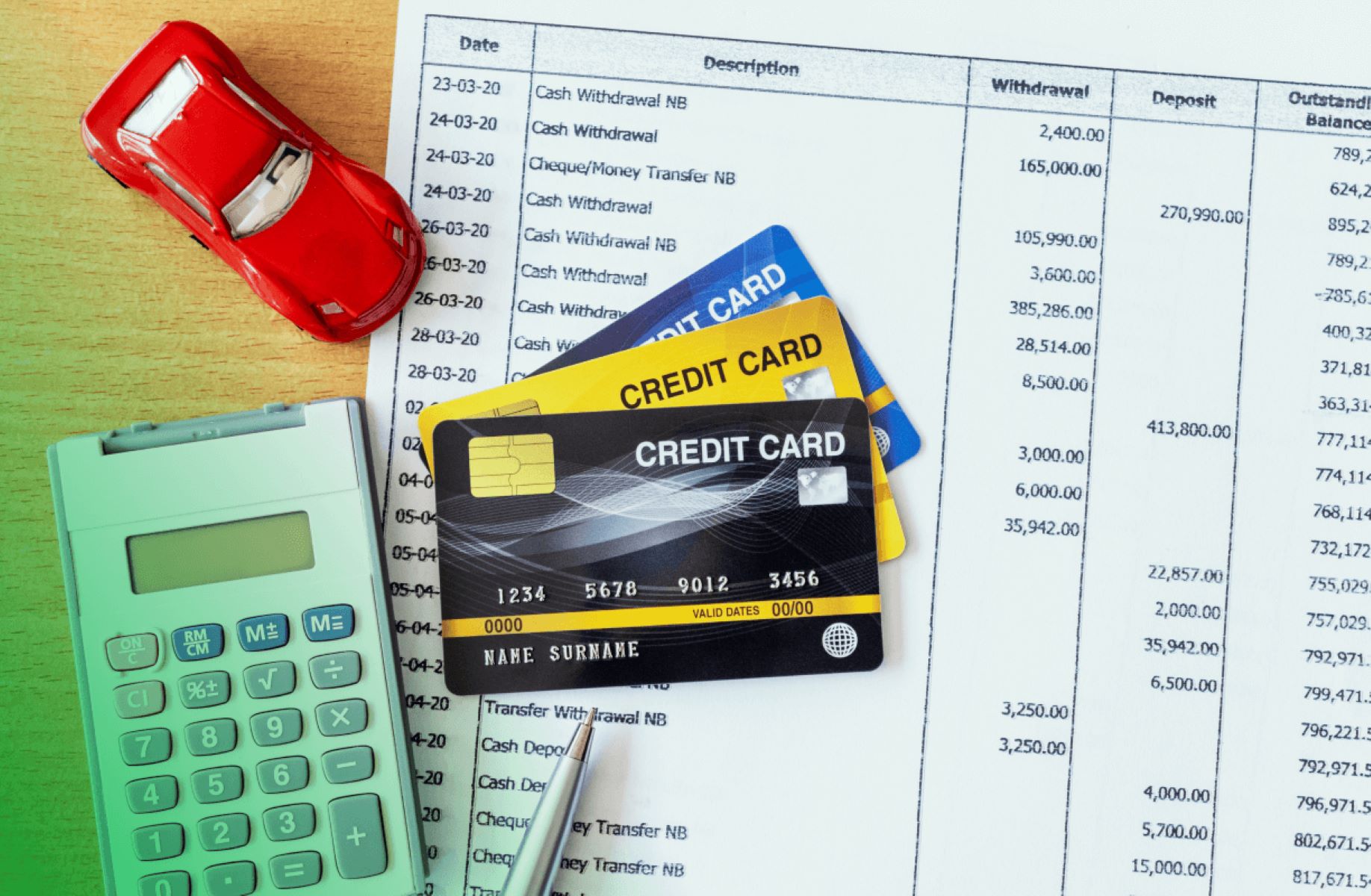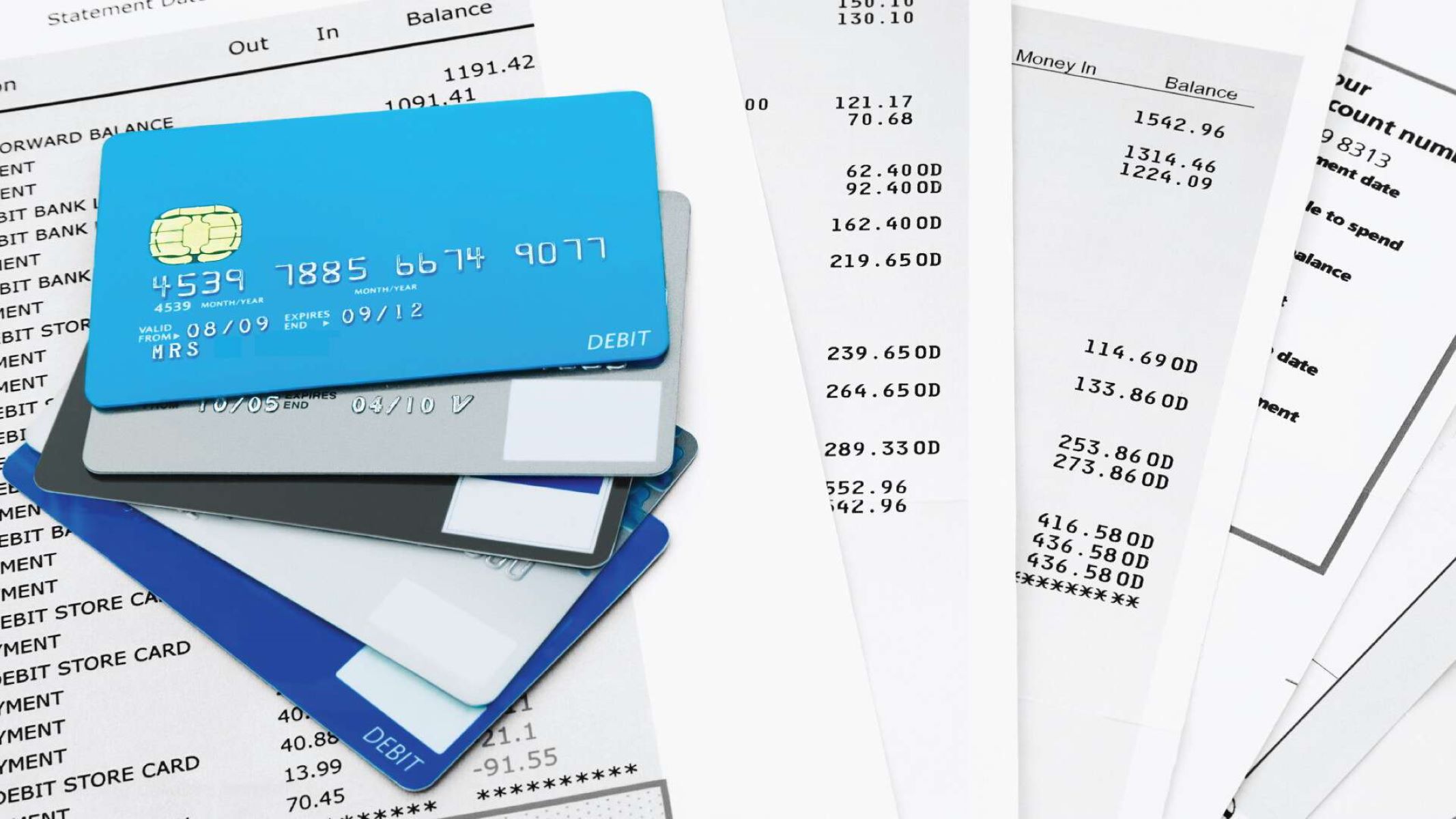

Finance
What Is A Credit Card Statement Date
Modified: March 10, 2024
Learn about the importance of credit card statement dates and how they impact your personal finance.
(Many of the links in this article redirect to a specific reviewed product. Your purchase of these products through affiliate links helps to generate commission for LiveWell, at no extra cost. Learn more)
Table of Contents
Introduction
Welcome to the world of credit cards, where convenience meets financial management. Credit cards have become an integral part of our daily lives, offering us the freedom to make purchases and payments with ease. However, managing your credit card transactions efficiently requires a basic understanding of various terms and concepts, including the credit card statement date.
So, what exactly is a credit card statement date? In simple terms, it is the date on which your credit card statement is generated by the card issuer. This statement summarizes all the transactions made on your credit card during a particular billing cycle, which is usually a month. It provides you with a detailed overview of your spending, outstanding balance, and payment due date.
Understanding the credit card statement date is crucial for effectively managing your finances. It allows you to keep track of your expenses, monitor your credit utilization, and ensure timely payment to avoid any late fees or penalties.
Throughout this article, we will delve deeper into the significance of the credit card statement date and its components. We will also explore how the statement date is determined and the factors that can influence it. Lastly, we will provide you with useful tips to manage your credit card statement dates efficiently, enabling you to maintain control over your financial commitments and maximize the benefits of your credit card.
Definition of Credit Card Statement Date
The credit card statement date is the specific day of the month when your credit card issuer generates your monthly billing statement. It marks the end of each billing cycle and signifies the period for which your transactions and charges are included in the statement. The statement date is important as it serves as a reference point for your credit card activity and creates a timeline for your payment due date.
When your statement is generated, it includes a summary of all the transactions you made during the billing cycle. This includes purchases, cash advances, balance transfers, and any applicable fees or charges. Additionally, the statement will show your previous balance, any payments or credits received, your current balance, and the minimum payment due.
It’s important to note that the statement date and the payment due date are not the same. The payment due date is the deadline for you to make the minimum payment or pay off the entire balance without incurring any late fees or interest charges. This due date is usually a few weeks after the statement date, allowing you enough time to review your statement, reconcile transactions, and plan your payments accordingly.
Understanding the credit card statement date is essential to managing your credit card finances effectively. By keeping track of this date, you can ensure that you have enough time to review your statement, identify any errors or discrepancies, and make timely payments.
Importance of Credit Card Statement Date
The credit card statement date plays a significant role in managing your finances and optimizing the benefits of your credit card. Here are some reasons why understanding and keeping track of your credit card statement date is crucial:
1. Billing Cycle: The statement date marks the end of your credit card’s billing cycle. It establishes a timeframe for your transactions, allowing you to monitor and manage your expenses within a specific period. By being aware of your billing cycle, you can better plan your spending and budget accordingly.
2. Payment Due Date: The statement date sets the stage for your payment due date. It determines the deadline by which you must make at least the minimum payment or pay off the entire balance to avoid late fees and additional interest charges. Failing to make timely payments can harm your credit score and financial stability.
3. Expense Tracking: The credit card statement provides a comprehensive breakdown of your transactions during the billing cycle. It enables you to review your spending habits, identify areas where you may be overspending, and make necessary adjustments to stay within your budget.
4. Credit Utilization Ratio: Monitoring your credit utilization ratio is crucial for maintaining a healthy credit score. This ratio represents the percentage of your available credit that you are using. By understanding your statement date, you can manage your credit card spending to keep your utilization ratio low, which can positively impact your creditworthiness.
5. Dispute Resolution: Reviewing your credit card statement allows you to identify any unauthorized or incorrect charges. If you notice any discrepancies, you can contact your credit card issuer to dispute the charges and protect yourself from fraudulent activity.
6. Rewards and Benefits: Many credit cards offer rewards and benefits programs based on the spending during a billing cycle. By knowing your statement date, you can strategically time your purchases to maximize the rewards and take advantage of promotional offers.
Ultimately, understanding the importance of the credit card statement date empowers you to take control of your financial well-being. It enables you to effectively manage your credit card transactions, track your expenses, and maintain a healthy credit profile.
Components of a Credit Card Statement
A credit card statement is a comprehensive document that provides a detailed overview of your credit card activity and financial obligations. Understanding the components of a credit card statement is essential to properly managing your finances. Here are the key elements typically found on a credit card statement:
1. Cardholder Information: This section includes your name, address, and contact information, along with your credit card account number and the statement date. It serves as a reference to ensure that the statement is associated with your specific credit card account.
2. Transaction Summary: This portion of the statement provides a summary of all transactions made during the billing cycle. It includes details such as the date of each transaction, the name of the merchant or establishment, the transaction amount, and the category of the expense (e.g., groceries, dining, travel).
3. Statement Balance: This is the total outstanding balance on your credit card as of the statement date. It includes the previous balance from the previous statement, any purchases, cash advances, balance transfers, fees, and interest charges, as well as any credits or payments received during the billing cycle.
4. Minimum Payment Due: This is the smallest amount you are required to pay by the payment due date to maintain your account in good standing. It is typically calculated as a percentage of the statement balance or a fixed minimum amount, whichever is higher. Paying only the minimum payment will incur interest charges on the remaining balance.
5. Payment Due Date: This is the deadline by which you must make at least the minimum payment to avoid late fees and additional interest charges. It is important to pay your credit card bill on time to maintain a good credit standing and to avoid any negative impact on your credit score.
6. Credit Limit: This is the maximum amount you are allowed to borrow on your credit card. The statement typically shows your credit limit along with the available credit, which is the difference between your credit limit and your current balance. Monitoring your credit utilization ratio can help you maintain a healthy credit score.
7. Interest Charges: If you carry a balance on your credit card beyond the grace period, you will be charged interest on the remaining balance. The statement will show the interest charges accrued during the billing cycle as well as the annual percentage rate (APR) applied to your outstanding balance.
8. Rewards and Bonuses: If your credit card offers rewards or bonus programs, your statement may include details about the points earned or rewards accumulated during the billing cycle. It can provide insight into the benefits you have earned and how to redeem them.
Understanding the components of a credit card statement allows you to effectively track your spending, review your financial obligations, and plan your payments accordingly. It is essential to carefully review your statement each month to ensure accuracy and to address any discrepancies or unauthorized transactions promptly.
Understanding the Statement Date
The statement date on your credit card plays a crucial role in managing your finances effectively. It is important to understand how the statement date is determined and what it signifies. Here’s what you need to know about understanding the statement date:
1. Billing Cycle: The statement date marks the end of your credit card’s billing cycle. This is the period during which your credit card transactions are recorded and included in your statement. The length of the billing cycle is typically one month, but it can vary depending on the credit card issuer.
2. Transaction Inclusion: All transactions made on your credit card within the billing cycle are included in the statement generated on the statement date. This includes purchases, cash advances, balance transfers, fees, and any interest charges applicable to your account during that time frame.
3. Cut-off Time: The statement date has a specific cut-off time, usually at the end of the business day. Any transactions made after this cut-off time will be recorded in the next billing cycle and included in the subsequent statement. It’s important to keep this in mind when planning your purchases and payments.
4. Statement Generation: The credit card issuer generates your statement shortly after the statement date. It can take a few days to a week for the statement to be prepared and made available to you. The exact timing may vary depending on the issuer’s processes and systems.
5. Payment Due Date: The statement date sets the stage for your payment due date. Typically, the payment due date is a few weeks after the statement date, providing you with ample time to review your statement, reconcile your transactions, and make your payment.
6. Reporting to Credit Bureaus: The statement date also has implications for credit reporting. The information on your statement, including your outstanding balance, credit limit, and payment history, is reported to credit bureaus. This data influences your credit score and overall creditworthiness.
7. Statement Availability: After the statement is generated, it becomes available to you either through online banking portals or as a physical copy sent to your mailing address. It is important to review your statement carefully to ensure its accuracy and address any discrepancies or fraudulent activity.
Understanding the statement date allows you to effectively plan your finances and make timely payments. By being aware of when your statement is generated and when your payment is due, you can avoid late fees, maintain a positive credit history, and gain greater control over your credit card transactions and repayments.
Factors Affecting the Statement Date
The statement date on your credit card is not arbitrary; it is influenced by various factors. Understanding these factors will help you anticipate when your statement will be generated and when you can expect important financial information. Here are some key factors that affect the statement date:
1. Billing Cycle: The length of your credit card’s billing cycle is a primary determinant of the statement date. Most billing cycles are approximately one month in duration, but some credit card issuers may have shorter or longer billing cycles. Knowing the length of your billing cycle will give you an idea of when your statement date will occur.
2. Cut-Off Time: Each credit card issuer has a specific cut-off time that marks the end of the billing cycle. Any transactions made after this cut-off time will be recorded in the next billing cycle, rather than the current one. Understanding the cut-off time allows you to plan purchases and payments accordingly, ensuring they are included in the desired billing cycle.
3. Processing Time: After the cut-off time, there is typically a processing period during which your credit card issuer verifies and compiles all the transactions made during the billing cycle. This processing time can vary among issuers and can affect when your statement is generated following the statement date.
4. Weekends and Holidays: The statement date may shift if it falls on a weekend or a holiday when financial institutions are closed. In such cases, the statement may be generated on the next business day. It’s important to take note of these potential delays, especially when planning payments to ensure they are made on time.
5. Statement Distribution Timeframe: Credit card issuers have specific timelines for distributing statements to cardholders. This timeframe can vary, and it may take several days or even weeks for you to receive your statement after it is generated. Understanding this distribution timeframe is essential for tracking your financial obligations and planning your payments.
6. Account Activity: If your credit card account has minimal or no activity during a billing cycle, your credit card issuer may choose to skip generating a statement for that particular cycle. This situation may arise when there are no transactions or charges on your card, resulting in a skipped statement date.
7. Statement Notifications: Credit card issuers often provide notifications or alerts to inform cardholders when their statements are ready or when the payment due date is approaching. These notifications can be sent via email, text message, or within a banking app. Being aware of the presence of such alerts can help you stay on top of your financial responsibilities.
Keep in mind that the specific factors affecting the statement date may vary depending on your credit card issuer and the terms and conditions of your credit card agreement. It is always a good practice to review your cardholder agreement or contact your credit card issuer for detailed information on how these factors may apply to your specific credit card account.
Tips for Managing Credit Card Statement Dates
Managing your credit card statement dates effectively can help you stay organized and in control of your finances. Here are some practical tips to help you manage your credit card statement dates:
1. Mark Your Calendar: Make note of your statement date on your calendar or set a reminder on your phone. This will help you stay aware of when your statement will be generated and when your payment is due.
2. Monitor Your Billing Cycle: Keep track of the length of your billing cycle. Understanding when your billing cycle starts and ends will give you an idea of when your statement date will occur each month.
3. Review Your Statements Regularly: Take the time to review your credit card statements carefully. Look for any discrepancies, unauthorized charges, or errors. Promptly report any issues to your credit card issuer to protect yourself against fraud.
4. Plan Your Payments: Aim to make your credit card payments well before the payment due date to avoid late fees and interest charges. Set up automatic payments or use online banking tools to ensure your payments are made on time.
5. Understand Grace Periods: Familiarize yourself with the grace period offered by your credit card issuer. This is the time between your statement date and the payment due date when you can pay off your balance without incurring interest charges.
6. Avoid Overspending: Be mindful of your credit card spending throughout the billing cycle. Stick to your budget and avoid making unnecessary purchases to keep your balance within manageable limits.
7. Monitor Your Credit Utilization: Keep an eye on your credit utilization ratio, which is the percentage of your available credit that you are using. Aim to keep this ratio below 30% to maintain a healthy credit score.
8. Notify Card Issuer of Travel Plans: If you plan to travel, especially internationally, inform your credit card issuer beforehand to avoid any potential issues with foreign transactions. This will help ensure that your card is not blocked for possible fraudulent activity.
9. Use Mobile Apps: Many credit card issuers have mobile apps that provide you with real-time access to your account. Utilize these apps to track your spending, view statements, and receive alerts for payment due dates.
10. Consider Statement Timing for Large Purchases: If you are planning a significant purchase, try to time it so that it falls shortly after your statement date. This will give you more time to pay off the balance before it is included in the next statement, allowing you to manage your finances more effectively.
By implementing these tips, you can stay organized, avoid unnecessary fees, and maintain a healthy credit card account. Remember, responsible credit card management starts with understanding and effectively managing your statement dates.
Conclusion
Understanding and effectively managing your credit card statement dates is crucial for maintaining financial control and maximizing the benefits of your credit card. The statement date serves as a reference point for your billing cycle, payment due date, and expense tracking. By being aware of your statement date, you can plan your spending, monitor your credit utilization, and ensure timely payments.
Throughout this article, we have explored the definition of the credit card statement date and its significance in financial management. We have discussed the components of a credit card statement and how to interpret them. Additionally, we have highlighted the factors that can affect the statement date and provided useful tips for managing your credit card statement dates effectively.
Remember, marking your calendar, reviewing your statements regularly, planning your payments, and understanding your billing cycle are essential steps in managing your credit card finances. By staying organized and mindful of your statement dates, you can avoid late fees, maintain a positive credit history, and make the most of the benefits offered by your credit card.
Keep in mind that each credit card issuer may have specific terms and conditions regarding statement dates. It is important to familiarize yourself with the details of your credit card agreement and contact your credit card issuer for any specific questions or concerns.
Overall, by mastering the management of your credit card statement dates, you can take control of your financial journey, build a strong credit profile, and effectively navigate the world of credit cards.














